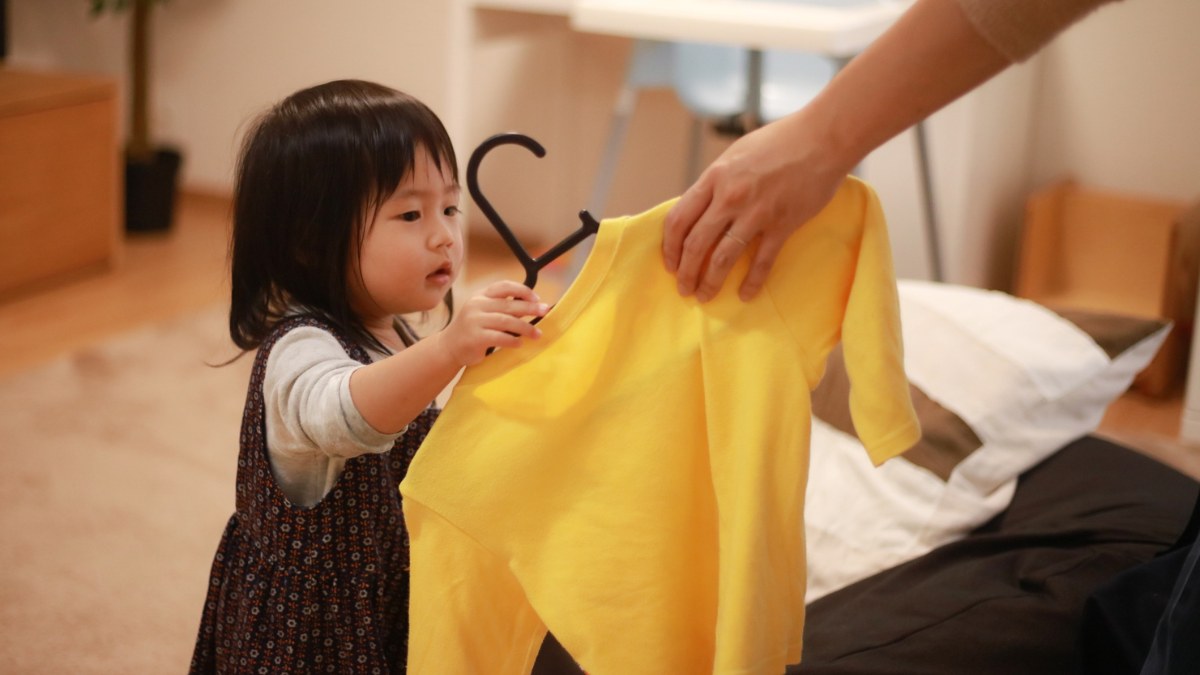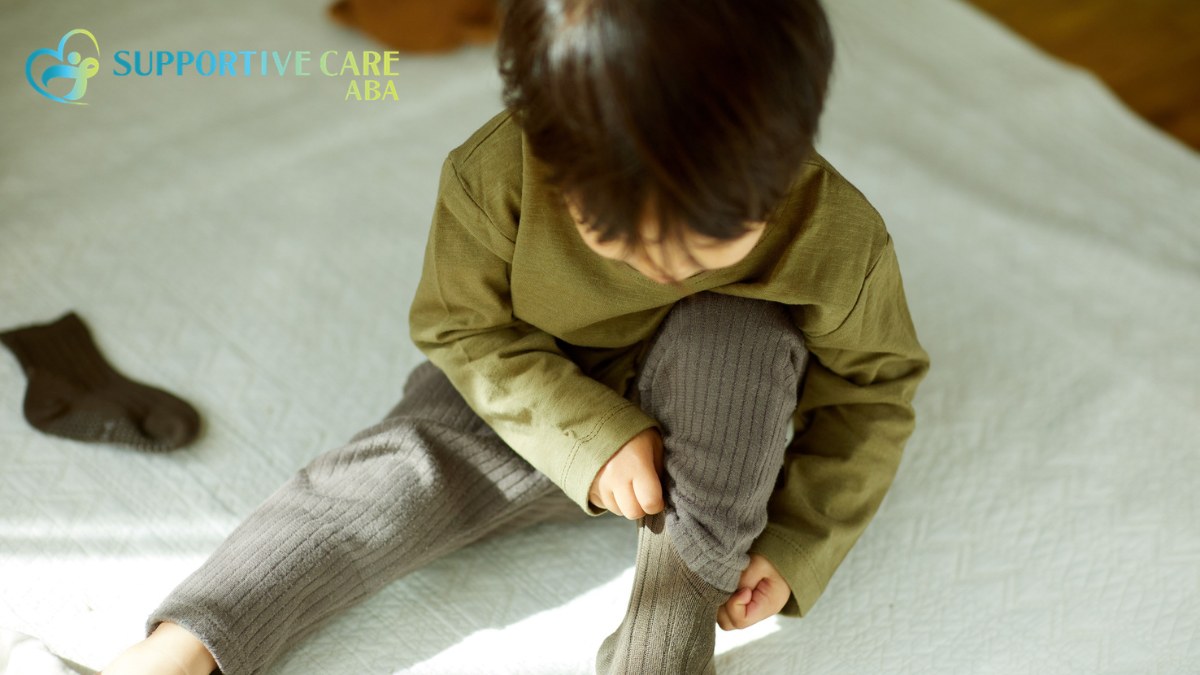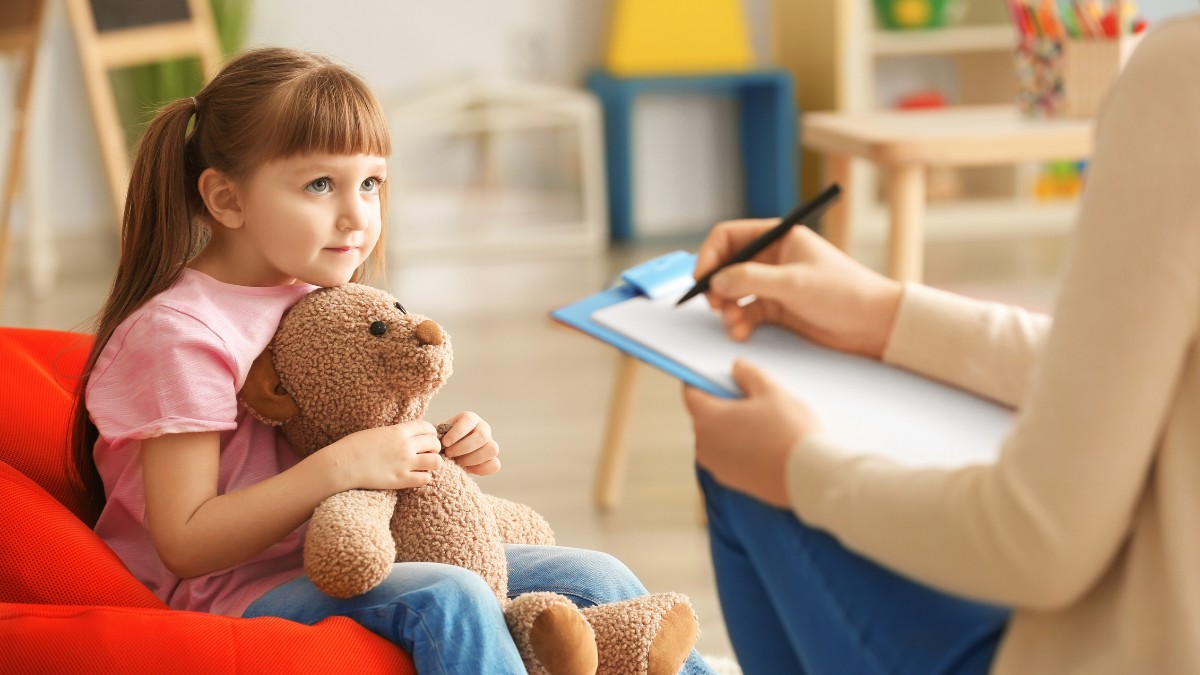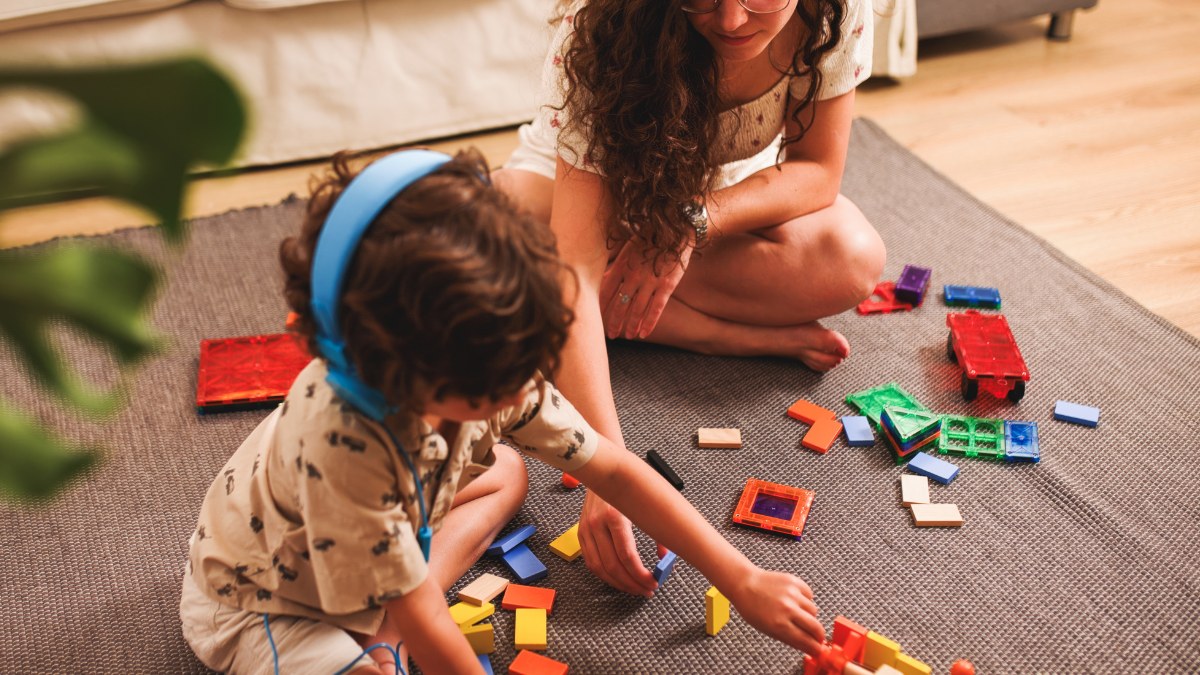Clothing in Autism: Why Fabrics & Fits Overwhelm Children
Clothing in autism often causes stress from textures and fits. Learn why sensory issues matter and how to make dressing more comfortable for children.

Clothing in Autism: Why Fabrics & Fits Overwhelm Children
Key Points:
- Sensory sensitivities can make everyday clothing a source of stress for autistic children.
- Certain fabrics, tags, seams, and fits can trigger discomfort or meltdowns.
- Practical strategies, from fabric choice to ABA-supported interventions, can make dressing easier and more comfortable.
Every parent knows that getting a child dressed can sometimes feel like navigating a minefield. For children with autism, this daily task often becomes far more than a routine—it can be a source of genuine stress and anxiety. Clothing in autism can overwhelm children because sensory sensitivities make certain fabrics, fits, and fastenings unbearable. Understanding why these challenges occur is the first step in helping your child feel comfortable and confident in their clothing.
At Supportive Care ABA, we often see families struggle with these daily challenges, and through targeted ABA therapy strategies, children can learn coping skills that reduce stress around dressing while promoting independence.
Understanding Sensory Sensitivities in Autism
Children with autism frequently experience heightened or reduced sensitivity to sensory input. Clothing touches the skin constantly, meaning textures, seams, tags, and snugness are never out of their awareness.
- Hypersensitivity vs. Hyposensitivity: Some children feel textures intensely and may find soft fabrics abrasive or seams painful, while others may barely notice discomfort, leading them to prefer tight or restrictive clothing.
- Tactile Defensiveness: A common form of hypersensitivity where even everyday fabrics like cotton can feel itchy or irritating, triggering irritability or avoidance behaviors.
- Auditory Sensitivity: Zippers, Velcro, and snaps can produce sounds that cause stress. Children who are sensitive to noise might refuse clothing with these fasteners.
- Temperature Sensitivity: Some autistic children react strongly to clothing that’s too warm or too cold, making layering or choosing appropriate materials critical.
Understanding these sensitivities helps caregivers select clothing that minimizes distress and builds a foundation for successful dressing routines.
Why Certain Fabrics are Triggers
Not all fabrics are created equal, especially in the world of autism. Materials that feel neutral to most people can be intolerable to a sensory-sensitive child.
Before we get into practical strategies, here’s a detailed look at fabrics that often trigger responses:
- Wool: While warm, wool is coarse and can scratch sensitive skin. Even thin blends may cause redness or agitation.
- Polyester: Some children dislike the smooth, slightly sticky feel of synthetic fabrics. They can cling to the body and trap heat, which heightens discomfort.
- Denim: Though durable, denim is stiff and seams can press painfully against the skin. Jeans often cause complaints about tightness or seam irritation.
- Seamless or Soft Cotton: Often preferred for comfort. Soft cotton without tags, seams, or elastic restrictions can reduce resistance during dressing.
- Fleece or Plush Materials: Generally soft, but the density or thickness can feel heavy or overwhelming, especially for children with tactile sensitivity.
By identifying fabrics that trigger stress, parents can proactively reduce clothing-related meltdowns.

The Role of Clothing Fit in Stress
Fabric isn’t the only factor—how clothing fits plays an equally significant role in comfort. Improper fit can make even soft fabrics unbearable.
Consider these common fit challenges:
- Tight Elastic Waistbands: While often convenient for parents, tight waistbands can dig into the skin, causing irritation or distraction.
- Restrictive Sleeves: Shirts that constrict the arms can trigger resistance, especially if a child has motor planning difficulties.
- Heavy or Layered Clothing: Layers can weigh down a child or cause overheating, leading to fussiness or refusal to wear clothes.
- Ill-Fitting Footwear: Shoes that rub or are hard to put on can trigger anxiety before the day even begins.
- Tag and Label Placement: Tags pressed against the skin can cause continuous irritation; many children react strongly, attempting to remove or avoid the clothing entirely.
Focusing on comfort over style can reduce the daily struggle of getting dressed and create a more positive morning routine.
7 Practical Strategies to Make Dressing Easier
Parents can adopt a range of strategies to reduce stress and increase independence in dressing. The key is to combine sensory-friendly clothing choices with structured approaches.
- Opt for Sensory-Friendly Clothing: Look for tagless, seamless, and soft fabrics. Many brands offer adaptive clothing designed for tactile-sensitive children.
- Introduce Choices Gradually: Let your child pick between two options of shirts or pants. Giving limited choices empowers them while reducing overwhelm.
- Use Gradual Desensitization: Slowly introduce clothing items that cause mild discomfort, pairing with positive reinforcement to increase tolerance.
- Visual Schedules and Social Stories: Step-by-step visual guides or stories can prepare a child for dressing, reducing anxiety by showing exactly what to expect.
- Flexible Fasteners: Velcro, magnetic snaps, or wide buttons can replace zippers or tiny buttons that require precision and patience.
- Comfort-First Footwear: Shoes that are soft, adjustable, and easy to slip on can prevent morning resistance and frustration.
- Clothing Rotation System: Keep a small, rotating set of “safe” clothes accessible. This simplifies choices and reduces the cognitive load of decision-making.
By implementing these strategies, parents can transform dressing from a daily battle into an achievable routine.
How ABA Therapy Supports Clothing Challenges
ABA therapy is particularly effective for addressing clothing-related stress. Applied Behavior Analysis focuses on breaking tasks into manageable steps, reinforcing desired behaviors, and gradually increasing tolerance to sensory input.
Through ABA techniques, children can:
- Learn step-by-step dressing routines with positive reinforcement.
- Increase tolerance for certain fabrics and fasteners over time.
- Develop independence in choosing and putting on clothes.
- Reduce meltdowns related to tactile or auditory sensitivities.
ABA therapy doesn’t just teach dressing skills—it helps children feel more in control and reduces daily stress for both the child and family.
Tips for Shopping and Organizing Clothing
Shopping for autistic children requires a bit more planning, but thoughtful choices can make a world of difference.
- Check Material Labels Before Purchase: Look for cotton, bamboo, or other soft fabrics; avoid wool and stiff synthetics.
- Buy Adaptive Clothing When Possible: Products designed for sensory sensitivities, including seamless socks and magnetic shirts, can ease daily routines.
- Test at Home: Before buying multiple items, try one piece to see how the child reacts to texture and fit.
- Organize Clothing by Comfort: Keep sensory-friendly clothing in an easily accessible spot to make mornings smoother.
- Consider Seasonality and Layering: Lightweight layers allow adjustments to comfort without needing multiple outfit changes.
Organized, thoughtful clothing choices can reduce stress before it even begins.

Creating a Positive Dressing Environment
The environment in which dressing occurs matters just as much as the clothing itself. A calm, predictable routine can reduce anxiety and resistance.
- Establish a Consistent Routine: Same time, same space, and predictable steps create comfort.
- Minimize Distractions: Turn off loud music or background noise, which can intensify sensory overload.
- Praise Effort, Not Just Success: Reinforce attempts and progress, even if the child struggles.
- Model Dressing Skills: Demonstrate clothing manipulation slowly and clearly; children often learn by imitation.
- Include a Calming Tool: Soft music, a weighted blanket, or a favorite toy nearby can make dressing less stressful.
A supportive environment combined with sensory-aware clothing increases the likelihood of smooth mornings and successful dressing experiences.
Supporting Independence and Confidence
Beyond comfort, the goal is to help children develop confidence and autonomy in dressing. This involves patience, repeated practice, and incremental skill-building.
- Set Small Goals: Start with easy tasks like pulling up pants, then progress to buttoning or tying shoes.
- Encourage Self-Selection: Letting children choose their outfits fosters independence and reduces resistance.
- Celebrate Achievements: Positive reinforcement encourages repetition of successful behaviors.
- Integrate Play: Turn dressing into a game to reduce stress and promote engagement.
- Collaborate With Therapists: Behavioral therapists can provide tailored strategies that match a child’s sensory profile.
Supporting independence in dressing can translate to broader self-care skills, increasing overall confidence and reducing parental stress.
Helping Your Child Overcome Clothing Challenges with ABA Therapy
Clothing challenges in autism are more than a simple preference—they reflect real sensory processing differences that can cause daily stress. By understanding fabric sensitivities, fit issues, and environmental triggers, parents can make informed choices that ease dressing routines. ABA therapy, such as that offered by Supportive Care ABA, provides structured strategies to gradually increase tolerance, teach step-by-step dressing skills, and foster independence.
Supportive Care ABA offers ABA therapy in Indiana, Georgia, Oklahoma, Virginia, and North Carolina that addresses sensory sensitivities, clothing tolerance, and self-care skills, helping children feel comfortable, confident, and more independent in their daily routines. Contact us today to learn more about how we can support your child.







%20(1).jpg)
.jpg)
.jpg)
.jpg)
.jpg)
.jpg)
.jpg)
.jpg)